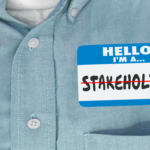Medicare for Some
“Whereas most Western democracies had adopted some form of national healthcare program, the United States relied on a private system that revolved, as the sociologist Paul Starr had recounted, around a sacred understanding of the doctor-patient relationship. When liberals talked about giving the government a bigger role in healthcare, stakeholders in the existing system always fought back protecting their authority and autonomy by warning that Washington would sever the ties between doctors and their patients.”2
That was in the 1940s.
In the 1950s, the American Medical Association (AMA) financed a full-throated campaign to oppose President Harry Truman’s proposal for national healthcare insurance. The AMA averred that socialized medicine would threaten the clinical—and perhaps more importantly, the economic—independence of physicians. The AMA quickly branded the effort un-American, and the legislation died in committee.
Commerce abhors a vacuum, and into the void went commercial insurance companies, supported by employers and egged along by favorable laws. The turning point was World War II. The war effort led to an increased demand for goods, which, in turn, led to low levels of unemployment. Pure capitalism would generally dictate that salaries would rise as a result. To prevent prices from spiraling out of control, however, the federal government imposed limits on both wages and prices.
Leave it to American ingenuity to discover a workaround: If companies could not raise wages, they would provide fringe benefits. Benefits, such as sick leave and health insurance, were not wages, and were therefore not subject to wage controls. And thus, a patchwork of private insurance became cemented into the American healthcare system.
This system, of course, neglected to address the elderly, who were simultaneously more likely to require healthcare services and less likely to be able to obtain the commercial insurance necessary to pay for those services. Medicare was created with the hope that, in the words of President Lyndon Johnson, “Older Americans would no longer be denied the healing miracle of modern medicine.”
The AMA was still not convinced. They declared Medicare was “at least nine parts evil to one part sincerity” and was “the beginning of the end of the private practice of medicine.”3
Despite this, Medicare became wildly popular. It now represents 20% of all national healthcare expenditures and 14% of the federal budget.4 It is difficult to find anyone whose life is not touched by Medicare, either personally or professionally.
In the 50 years since Medicare was enacted, it has transformed from heresy to gospel. But it was intended to be much more: Reformers picked the elderly as a sympathetic beneficiary of a bold new entitlement. With time, it was expected that Medicare would gradually expand to cover all Americans.5 Unfortunately, changing political winds made such expansion unpalatable. The momentum behind healthcare reform faded, and Medicare’s mandate has remained largely unchanged to the present time.


